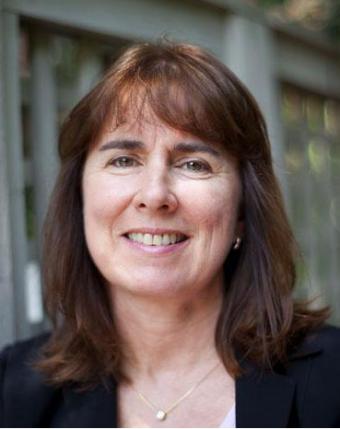PROVIDENCE, R.I. [Brown University] — Brown University has been awarded $15.5 million to form a national mathematics research institute, where scholars will explore the intersection of computation and mathematics, the University announced today.
The award funds the Institute for Computational and Experimental Research in Mathematics and comes from the National Science Foundation. It is the eighth math institute in the United States funded by the NSF and the only one of its kind in New England.
ICERM will leverage internationally recognized programs in applied and pure mathematics and computer science to create long-term research programs and scholarly conferences to attract the world’s best minds in computation and experimental math. It is another step forward in Rhode Island’s development of a knowledge economy.
“Mathematics has entered an age where powerful and readily available computational tools can transform the mathematical landscape at all levels of education,” said Jill Pipher, professor of mathematics, who will lead the institute at Brown. “ICERM’s mission is to support and enhance the interaction of mathematics and computation and to solve new problems of critical importance and benefit to society.”
Specific areas in which mathematics and computation have immediate societal benefits include the development of advanced mathematical tools for search engines, secure communications and router optimization, Pipher said.
“This institute will not only strengthen mathematical research at Brown but also will help in its applications to other research areas,” said Clyde Briant, vice president for research at Brown. “Indeed, the theme and planning of the institute underscore the importance of collaboration with other universities and with industries to address the grand challenges of our day. The focus of experimental and computational math also will couple well with the University’s recent investment in a supercomputer that is being used not only by Brown researchers but by others in Rhode Island.”
ICERM has partnered with three of the world’s pre-eminent computer hardware and software companies — Google, IBM, and Microsoft. Representatives from each company will sit on the institute’s scientific advisory board, which means the firms can assist in designing research programs at the institute that may translate into real world uses, including in health care, communications, financial services and national security.
“Building better connections with these companies and the mathematics research community is an important goal of the institute,” said Jan Hesthaven, professor of applied mathematics and an associate director at the institute.
ICERM will begin operations in fall 2011 with five years of funding from the NSF. The institute will start with a full-time staff of five and will support two full-time postdoctoral researchers each year and up to seven postdoctoral researchers each semester. It will be located at 121 S. Main St. in Providence. In addition to Hesthaven, the associate directors are Jeffrey Brock, professor of mathematics, and Bjorn Sandstede, professor of applied mathematics.
An important part of the institute’s mission is to capitalize on the growing power of computers. To do that, researchers will seek to expand the use of computational and experimental methods in mathematics, support theoretical advances related to computation, and address problems posed by the existence and use of the computer through mathematical tools, research and innovation.
Much of those advances are expected to come from regular conferences and semester-long research programs featuring the brightest minds in mathematics and computation. The institute also will host as many as three dozen visiting faculty, postdoctoral researchers and graduate students to study and teach.
“In other words, we don’t just want people to fly out here,” Hesthaven said. “The idea is you come and spend a semester working with colleagues, participating in activities and forming new collaborations that continue after your stay.”
ICERM will seek to train the next generation of mathematical and computational scientists. Many recent studies, including a 2008 report from the National Academy of Sciences, note that a concerted effort is needed to bolster the nation’s competitiveness and pre-eminence in science and technology. To that end, the institute will form an education board that will be charged with overseeing the undergraduate programs and graduate training, and seeking federal and foundation support to host education summits and other activities aimed at improving instruction in the mathematical sciences at the K-12 level.
The institute is the next step in the long history of mathematics and applied mathematics at Brown. The Mathematics Department awarded its first Ph.D. in 1929 and has produced scores of graduates who populate top-level mathematics departments and hold prominent positions in industry. Established in 1941, the Division of Applied Mathematics is among the strongest programs of its kind in the country. The division’s research strengths are in applied probability and statistics, computational molecular biology, differential equations and dynamical systems, fluid mechanics, scientific computation, stochastic control and optimization and vision research.
“Brown would never have been awarded this institute without the distinguished reputation and solid science in mathematics and applied mathematics that has existed for decades,” Pipher said. "We all believe that this institute, with its strategic location at Brown, has the potential to change the scientific landscape through its focus on the interaction of mathematics and computation.”

